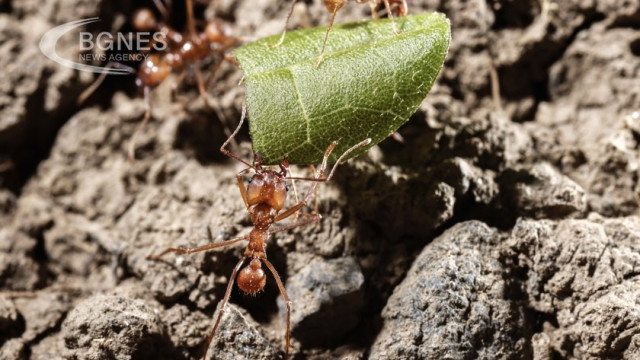Red fire ants are forming rafts to navigate floodwaters in the northeastern Australian state of Queensland, where extreme weather conditions threaten to spread the highly invasive species across the country.
"Recent heavy rainfall and wild weather in the region could accelerate the spread of fire ants, one of the world's worst invasive species," Reece Pianta, invasive species outreach manager at the Australian Invasive Species Council (ISC), warned in a statement to CNN.
"Fire ants are more active before or after rainfall events and can form large floating rafts that move with water currents to attach themselves in new areas," Pianta says, urging residents to be on alert. The ISC shared a video on social media of fire ants moving in a raft formation.
"It's very easy to contribute. Just photograph any suspicious ants and report them," it added.
Queensland has witnessed severe weather and severe flooding in recent weeks. Last month, the city of Cairns was cut off from the world by torrential rains triggered by the remnants of Tropical Cyclone Jasper. The floods left many of the city's more than 150,000 residents on their roofs.
ISC models show that fire ants will spread to "every corner of Australia" if the Queensland outbreak is not contained.
In its statement, the ISC points out that it recently received a four-year commitment from the state of Victoria of 70 million Australian dollars ($46 million), which will be directed towards the national fire ant eradication program, which Pianta says means eradication is still possible.
Native to South America, the red fire ant Solenopsis invicta is an omnivorous species that destroys both crops and livestock. Its venomous sting causes pustules and allergic reactions and can kill a person. Over the last century it has spread throughout much of the United States, Mexico
Caribbean, China and Australia. Last year it was first spotted in Europe.
The first fire ant infestation in Australia was in 2001, ISC reports. So far, the country has brought seven invasions under control - from Queensland's capital, Brisbane, to the border of the neighbouring state of New South Wales (NSW), adding that the aim is to contain and then eradicate the invasions.
But in November 2023 the ants were discovered in New South Wales, sparking fears they could reach the Murray-Darling Basin and spread out of control.
At the time, New South Wales Agriculture Minister Tara Moriarty reiterated that "red imported fire ants are a terrible invasive pest causing serious social, economic and environmental damage".
"Our teams are focused on limiting further spread and encouraging reporting and compliance through a targeted communications campaign," she added.
Red ants can spread rapidly on their own, but infestations are usually accelerated by human activity, for example in shipping containers or during shipments of potted plants or soil. / BGNES







